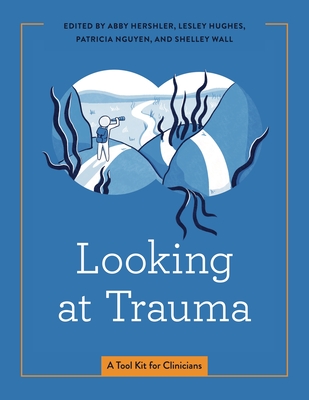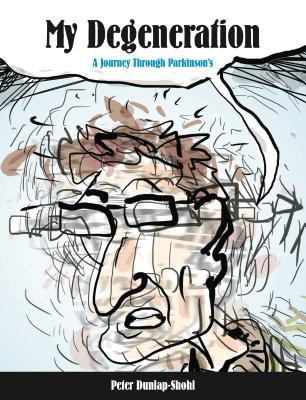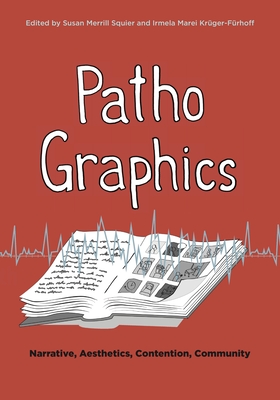


Books in series

Algériennes 1954-1962
2018

Aliceheimer’s
Alzheimer’s Through the Looking Glass
2013

The Bad Doctor
2014

The Book of Sarah
2019

Escaping Wars and Waves
Encounters with Syrian Refugees
2018

The Facts of Life
2017

Graphic Medicine Manifesto
2015

Graphic Reproduction
A Comics Anthology
2018

Hole in the Heart
Bringing Up Beth
2016

The Lady Doctor
2019

Life Support
Invitation to Prayer
2019

Looking at Trauma
A Tool Kit for Clinicians
2021

Menopause
A Comic Treatment
2020

My Degeneration
A Journey Through Parkinson’s
2015

Pathographics
Narrative, Aesthetics, Contention, Community
2020

Taking Turns
Stories from HIV/AIDS Care Unit 371
2017

Things to Do in a Retirement Home Trailer Park
2012

The Third Population
2018

A Thousand Coloured Castles
2017

Wij twee samen
2015

Vanni
A Family's Struggle Through the Sri Lankan Conflict
2019

The Walking Med
Zombies and the Medical Image
2016
Authors


Dr Sarah Lightman is a London-based artist, curator and writer. She attended Central/St Martin's and The Slade School of Art where she won The Slade Prize, The Coldstream Prize, and The Slade Life Drawing Prize. She has a PhD from University of Glasgow in women’s autobiographical comics. She has extensively published her research and her artwork has been exhibited in museums and galleries internationally. Her first graphic novel, The Book of Sarah, will be published by Myriad in 2019. Sarah co-curated Graphic Details: Confessional Comics by Jewish Women, an internationally touring exhibition of 18 comic artists, that opened at 9 museums over 6 years. She edited Graphic Details: Jewish Women’s Confessional Comics in Essays and Interviews (McFarland 2014), that was awarded The Susan Koppelman Prize for Best Feminist Anthology (2015) and The Will Eisner Award for Best Scholarly Publication (2015), an Association of Jewish Studies/Jordan Schnitzer Book Award for Jews and The Arts (2016).

Paula is an author, illustrator and comics creator. She has illustrated numerous books for children and written three children's picture books as author. She's been a professional freelance illustrator since 1992. Her first graphic memoir, The Facts of Life, (for adults) is published by Myriad Editions (UK) and Penn State University Press (N America). It's about the pressures on women to have children and what happens when life doesn't go to plan. An extract of it was shortlisted in Myriad's inaugural First Graphic Novel Competition in 2012. Judges included Ian Rankin, Bryan Talbot, Hannah Berry and Steve Bell. "Intensely moving… honest and personal. It is a story told in pictures with sparse words about fertility, about loss, about growth. Of expectations - both personal and those from friends, family and society. It is about grief and pain and love. I wish I could think of a less trite way of saying this, but it makes you feel less alone." Victoria MacDonald, Health and Social Care Correspondent, Channel 4 News "Funny, poignant and philosophical, this elegant graphic novel challenges cultural pronatalism and examines the experience of living with a chronic, yet poorly understood, illness. I learnt a lot from this visually sophisticated and tremendously informative work, which is a must-read for anyone interested in reproductive politics." -Ian Williams, co-founder, Graphic Medicine Paula's interests include wildlife, especially of the feathered variety. She pleads with them to prefer her garden, but local felines have other ideas. Her love of nature often inspires her writing, especially her own tiny woodland of oaklings. She dabbles in photography and considers herself an enthusiastic amateur. Instagram: @paulajkstudio (illustration) @paulajknight (photos)
Librarian Note: There is more than one author in the Goodreads database with this name. This profile may contain books from multiple authors of this name.

I was born in Greensboro, North Carolina but my parents moved us back to New York City before I could even hold my head up. Like all young primates, I started out using my eyes and hands long before I began to use words. Reading came late—when it did I was crazy for books. The windows of my childhood bedroom were high and faced the street. After I was tucked in for the night, I would stand in my bed and read by streetlight. Still, unlike most writers, I never kept a journal or wrote a story or poem in grade school. All of my school papers were done with great anguish and at the last minute. Instead, I was always outside running or climbing or sledding or drawing or making something with my hands. As a young New Yorker at Barnard College, Columbia University, I continued to avoid writing, and split my courses between visual arts and biology: painting with Milton Resnick, printmaking with Tony Smith, and lab work on the eye-brain connections of zebrafish. My oil paintings and intaglio prints were abstractions inspired by natural and biological forms of all scales. I was equally drawn to imagery seen under the microscope, and the sweep of the earth’s surface particularly when it has been worked and touched by humans for millennia. A teaching thread in my life began when, fresh out of 10th grade, I landed with my family in Taiz, Yemen, and was promptly hired to teach 6th and 7th grade science and math at Yemen’s first experiment in bilingual co-education. More teaching continued out of college as an artist in residence for the Dobbs Ferry New York Public Schools, and as a Biology Lab Instructor at Barnard. As a young mother struggling to find time to make art, I decided to get “practical” (I know!) and wrote a dissertation on the anthropology of childbirth from the University of Pennsylvania. Anthropology—a discipline all about connections between every facet of being human—welcomed art and science and unlocked the creative writing door for me. Since moving to the mountains of Vermont with my husband and three sons in the summer of 2000, I’ve used stories and art to teach medical students at the University of Vermont’s College of Medicine. Creative writing and artwork was done mostly during hours stolen from sleep and squeezed between other responsibilities. The balance tipped toward creative work shortly after my mother, Alice, and dementia moved in with us. Alice had always wanted me to be a doctor. When she stood in my kitchen in early 2008, admiring the cabinet knobs I had hand painted and said, “You should quit your job and make art full time,” I listened, and I haven’t looked back. When Alice lived with us, I had the great pleasure of earning an MFA in writing from Vermont College of Fine Arts.

Ephameron is de nom de pinceau van huisillustrator Eva Cardon, Doctor in de Kunsten en zowel in binnen- als buitenland een graag geziene grafische gast. Ze is curator van het festival Grafixx, de jaarlijkse viering van beeldverhaal en illustratie. Haar werk doet verslag van een gevoelige kant van de wereld, documenteert de intieme en onopvallende drama’s die samen een leven vormen. Ephameron publiceert illustraties in o.a. The New York Times, De Standaard, De Tijd, L’Echo en Knack Weekend. Ze neemt deel aan en cureert tentoonstellingen over de hele wereld.


Though Aneurin (Nye) Wright is the son of a West Texan Architect and a London writer, he was born in the wilds of rural Idaho. He earned a BA in English Literature from Yale and a BFA in Illustration and Communication Design from the Pratt Institute. He was hailed as ‘an amazing talent’ for his first comic Lex Talionis: A Jungle Tale (Image, 2004). He was the lead animator for the Short History of the United States cartoon sequence in Michael Moore’s Academy Award-winning documentary Bowling for Columbine. He lives in Brighton, England with his graphic designer wife, Lyndsay. They're currently awaiting the arrival of their first child, codenamed Sprout. “Things to Do…” is his first graphic novel.

